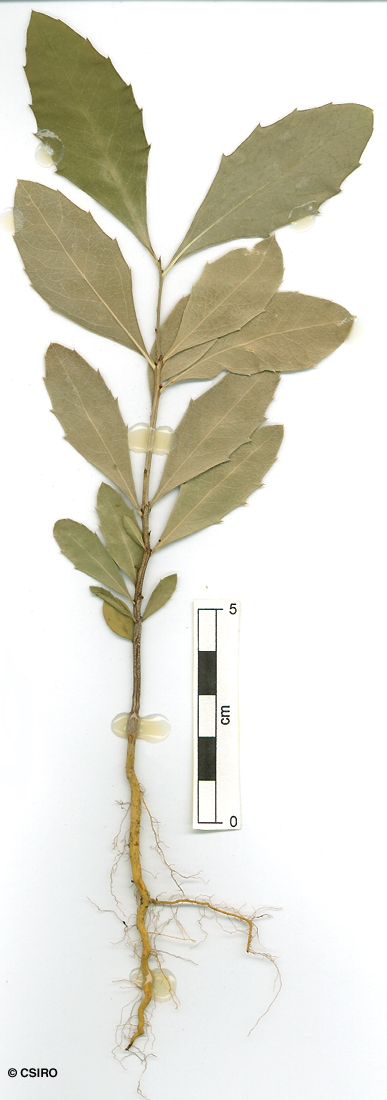Australian Tropical Rainforest Plants - Online edition
Denhamia fasciculiflora (Jessup) M.P.Simmons




McKenna, M.J. et al (2011) Systematic Botany 36(4): 929
Orange bark
Seldom exceeding 30 cm dbh. Thin orange layer present just under the dead bark.
Leaf blades about 30-100 x 17-50 mm. Lateral veins curving but not forming definite loops. Midrib raised on the upper surface. Leaves often clustered, appearing almost as whorls.
Capsules globular or obovoid, about 5-7 x 4-7 mm. Aril surrounding the seed. Cotyledons green.
Cotyledons elliptic, about 9-13 x 6-9 mm. First pair of leaves distinctly serrate, about 2-4 teeth on each side of the leaf blade. At the tenth leaf stage: leaf blade elliptic, glabrous, dentate, teeth conspicuous, aristate, about 4-12 on each side of the leaf blade; stipules minute, visible only with a lens; stem +/- 4-angled, winged or longitudinally ribbed. Roots orange. Seed germination time 120 to 207 days.
Endemic to Queensland, occurs in CYP and NEQ. Altitudinal range from near sea level to 500 m. Grows in drier rain forest and monsoon forest.
Maytenus fasciculiflora Jessup, Flora of Australia 22: 223. Type: Annan R. crossing, Cooktown road, Qld, 27 July 1973, B.P. Hyland 6793; holo: BRI; iso: QRS.





